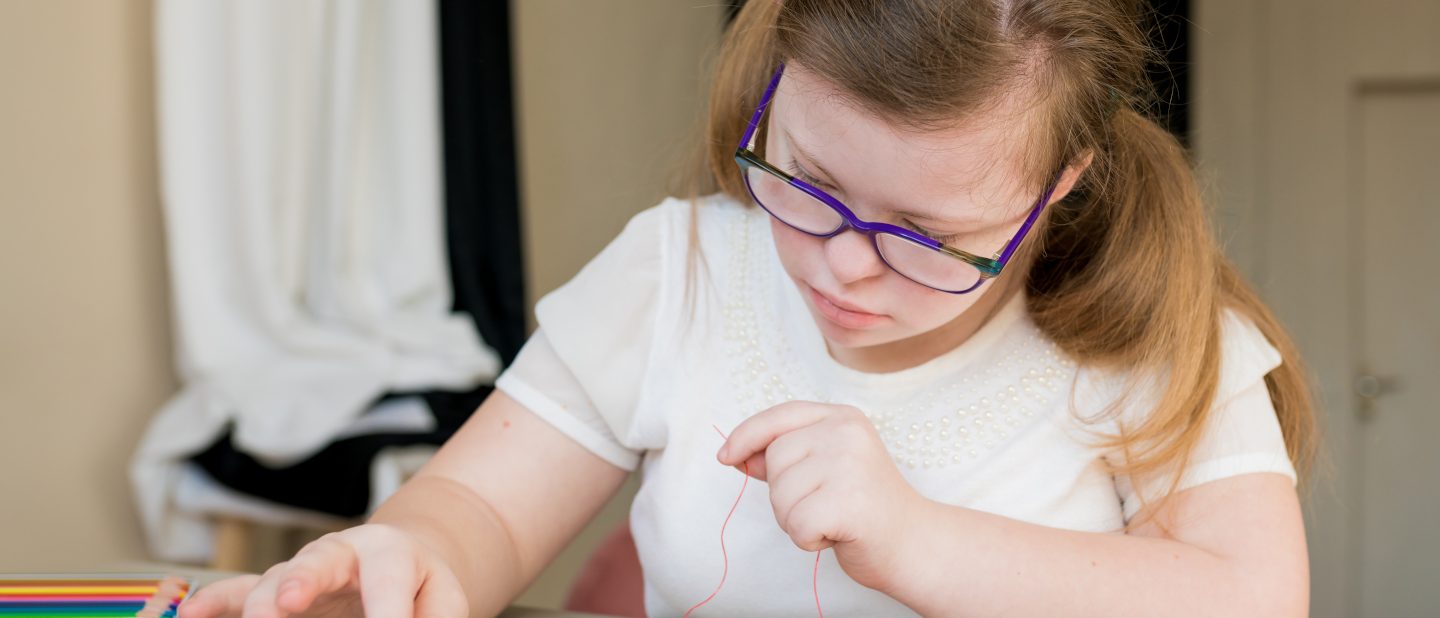
Threading activities to help fine motor development
Fine motor skills are crucial for everyday tasks such as writing, buttoning clothes, and self-feeding. If your child needs support in this area of their development, threading is a great activity to work on. Threading not only aids in fine motor development but also promotes hand-eye coordination, motor control, and concentration.
The benefits of threading activities
Hand-eye coordination: Threading requires a child to coordinate their hand movements with visual information, enhancing hand-eye coordination. This skill is crucial for tasks like handwriting and playing sports.
Fine motor control: Manipulating the thread and guiding it through tiny holes or beads helps develop fine motor control and dexterity. Children learn to use precise finger movements, improving their ability to handle objects and perform intricate tasks.
Focus and concentration: Threading activities often demand focused attention and concentration. Children must pay attention to details, plan their actions, and stay engaged in the task, which supports the development of sustained attention skills.
Bilateral coordination: Threading encourages the use of both hands together, promoting bilateral coordination. This skill is essential for activities like tying shoelaces, using utensils, and engaging in sports or musical instruments.
Problem-solving skills: As children encounter challenges, such as threading a particularly small bead or untangling the thread, they develop problem-solving strategies. This fosters resilience, flexibility, and creativity in overcoming obstacles.
Tips for effective threading activities
- Provide adaptations: Modify the activity based on the child’s abilities, using larger beads, thicker threads, or adaptive tools like needle threaders if needed.
- Use visual cues: Use visual prompts or guides to help children understand the threading process, such as color-coded threads or patterns to follow.
- Encourage communication: Prompt children to describe their actions, ask questions, and express their thoughts and feelings during threading tasks, promoting language development and social interaction.
- Rotate materials: Introduce a variety of threading materials, such as different shapes, sizes, and textures, to keep the activity engaging and stimulate sensory exploration.
Threading activities to try at home
Beaded necklace or bracelet: Provide your child with a variety of beads and a string or elastic thread. Encourage them to create their own necklace or bracelet by threading the beads onto the string. This activity not only enhances fine motor skills but also allows for creativity and personal expression.
Button threading cards: Create cards with different shapes (e.g., circles, squares, stars) and attach buttons with corresponding holes. Encourage your child to thread the buttons through the holes on the cards, matching the shapes. This activity helps improve hand-eye coordination and shape recognition. Look out for button threading card sets online or in stores too and cut out the first step of this activity!
Pasta threading: Use different types of pasta such as penne, rigatoni, or macaroni. Provide your child with a piece of string or pipe cleaner and let them thread the pasta onto it to create unique patterns or necklaces. This activity supports fine motor control and allows for sensory exploration. Why not paint the pasta first to make things more fun!
Threading with straws: Cut colourful plastic straws into small pieces and provide your child with a string or pipe cleaner. Encourage your child to thread the straw pieces onto the string, creating a vibrant and textured threading project. This activity strengthens fine motor skills and encourages creativity.
Felt button flowers: Cut out flower shapes from felt and attach buttons with corresponding holes to each flower. Invite your child to thread the buttons onto the flowers, practicing fine motor skills while creating a beautiful and tactile flower garden.
Threading with wooden blocks: Use wooden blocks with pre-drilled holes of different sizes. Provide your child with a string or shoelace and encourage them to thread the blocks onto it, experimenting with patterns and sequences. This activity enhances hand-eye coordination and spatial awareness.
Paper plate threading: Cut out the centre of a paper plate to create a ring with evenly spaced holes around the edge. Give your child a shoelace or yarn with a knot at one end and ask them to thread it through the holes, weaving in and out to create patterns. This activity promotes fine motor control and concentration.
Fruit loop threading: Use colourful cereal loops such as Fruit Loops or Cheerios. Provide your child with a piece of yarn or pipe cleaner and let them thread the cereal loops onto it, creating edible necklaces or patterns. This activity combines fine motor practice with sensory exploration and can be a fun snack afterward.
Threading with buttons and fabric: Cut out fabric squares or circles and sew buttons onto them, leaving a loop of thread attached. Encourage your child to thread additional buttons onto the loops, practicing threading and buttoning skills simultaneously.Pipe cleaner and bead cculptures: Give your child pipe cleaners and a variety of beads and let their imaginations take flight! Encourage them to thread the beads onto the pipe cleaners and bend them into different shapes and sculptures.






